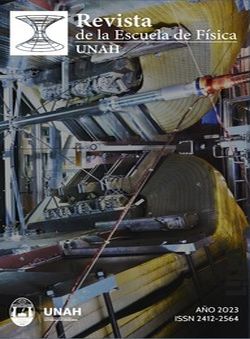NO2 distribución espacial y tendencias sobre el territorio guatemalteco, entre 2005 y 2021, empleando datos de OMI
DOI:
https://doi.org/10.5377/ref.v11i1.16821Palabras clave:
Atmósfera, contaminación, dióxido de nitrógenoResumen
El dióxido de nitrógeno (NO2) genera efectos adversos a la salud y al ambiente, por lo cual se requiere realizar el monitoreo de sus concentraciones ambientales, el NO2 es producido durante el proceso de generación de energía eléctrica. En el caso de Guatemala, la red de monitoreo es exigua, por lo anterior no se conoce su tendencia y distribución espacial. Se analiza la estacionalidad y tendencias de la concentración de NO2 troposférico en el territorio guatemalteco entre 2005 y 2021 mediante el empleo de observaciones satelitales provenientes del Ozone Monitoring Instrument (OMI), a partir del análisis preliminar se identificaron tres regiones. Para cada región se identificó si existía periodicidad y tendencia en las observaciones. Aunque en general la tendencia es al descenso en la abundancia de NO2 sobre todo el territorio, se observa que existen zonas del país donde la presencia del gas se incrementa a lo largo del período de estudio. Los niveles mas elevados de NO2 fueron observados sobre la región en la cual se desarrollan las industrias de generación eléctrica (a partir de combustibles fósiles y biomasa), y azucarera. Los incendios forestales, a pesar de ser abundantes en una gran parte del territorio guatemalteco a finales de la época seca, no tienen influencia significativa sobre la abundancia de NO2 en el país.
Descargas
235
Descargas
Publicado
Cómo citar
Número
Sección
Licencia
Derechos de autor 2023 Revista de la Escuela de Física

Esta obra está bajo una licencia internacional Creative Commons Atribución-NoComercial 4.0.
© Revista de la Escuela de Física




